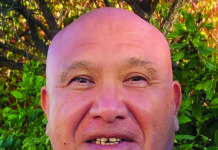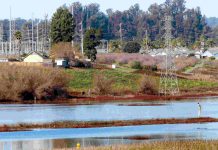
Editor’s note: This is the second entry in a multi-part series concerning housing in the Pajaro Valley. For the first part see the Sept. 13 edition of The Pajaronian or click here.
WATSONVILLE—Perhaps one of the biggest reasons why Watsonville struggles to keep up with its growing housing demands is the city’s size constraints and lack of easily developable land.
With more than 52,000 people living in a little more than six square miles, Watsonville is the second-most densely populated city that falls in the 831 area code, according to USA.com — Greenfield leads the area that spans Monterey, San Benito and Santa Cruz counties. Including unincorporated towns, Watsonville is ranked the 100th most densely populated location in the state, with 7,678.4 people per square mile. The City of Los Angeles, by comparison, is 99th with 7,683 people per square mile.
The City of Watsonville’s 2015-2023 housing element — a state-mandated document used by cities to set housing goals — said the city had the potential to build an estimated 1,445 units over 105 acres of land. Of those potential units, 568 of them sat on 44.8 acres of vacant land, and the other 877 units sat on 60.2 acres of “underutilized” land, or sites in which the existing use is built well below the maximum density allowed in that zone.
Over the last four years developers have claimed many of the city’s vacant lots that were ripe for housing — Pacific Sunshine Garden off Ohlone Parkway and a recently approved development on Miles Lane from Mid-Pen, a nonprofit that focuses on affordable housing, were among those lots — and many “underutilized” properties that had the most accessible housing potential have also since been redeveloped — the apartment complex at 106 Marchant St. and recently completed Blackbird Townhomes being two of the prime examples.
Though Watsonville still has a potential to create roughly 1,000 new units, according to Community Development Director Suzi Merriam, the remaining options for large-scale projects that entice developers and make significant dents in the housing stock shortage are slim, and that scarcity has forced developers to think outside of the box when approaching potential projects.
When leaders from Pacific Sunshine Garden walked away from an option to redevelop a 13-acre junkyard on Errington Road near the Watsonville Slough because of possible environmental problems, developer Lisa Li bought the lot for $4.4 million and made plans for a 150-home community approved by the City Council in 2018 now known as Hillcrest Estates — then Sunshine Vista.
The purchase and planned redevelopment required the removal of approximately 50,000 cubic yards of contaminated soil, and millions of additional dollars of environmental mitigation.
Though city staff said the $60 million project is fully entitled, Li in August said they were still in the design phase and there was no timeline for the start of construction.
“We’re running into more complicated and challenging sites as we try to expand housing opportunities,” said Watsonville City Manager Matt Huffaker. “They require some innovation and perseverance to see them through to completion.”
If there is going to be a housing boom in Watsonville’s near future, Huffaker believes it will come from development in the city’s downtown. The housing element said that corridor had the potential to develop an estimated 356 units, but that number could see a significant bump with the implementation of the Downtown Specific Plan, according to Merriam. The plan, presented to the public for the first time on Wednesday, could rework the residential densities allowed in downtown and make way for more projects similar to The Terrace, a product of local developer Bill Hansen and Pacific Coast Development.
The sleek 54-unit, four-story mixed-use apartment complex started off as a pocket park that was not quite big enough for redevelopment in Hansen’s eyes. But when the adjacent Chop Stick Restaurant closed in 2012, Hansen purchased the property and demolished the building to make way for a project that would challenge people’s perception of what could be accomplished in the city’s downtown.
Today, The Terrace is at capacity, according to Hansen, and Togo’s is set to open in the coming months. Hansen said he hopes to pair the sandwich shop with a wine tasting room or something similar in the near future.
Following that buy-up, tear-down blueprint, Hansen in March bought a former bank building at 588 Main St. and scrapped it to make way for another housing project. The new five-story apartment complex, dubbed The Residence, will feature 72 housing units — 20 percent of them affordable — and roughly 3,000 square feet of retail space on the first floor.
“You have to be creative and smart about the way you look at property now,” Hansen said. “You’re not going to find the big open lots anymore. If you want to build projects that can make a dent in the housing stock, you have to be patient, you have to be able to see the diamonds in the rough and have the will to act on a plan.”
Hansen said it would be “problematic” to move too fast while making sweeping drastic changes to the zoning in downtown — limits on parking, height and density need to be taken into account. He does, however, support the ongoing efforts to redevelop the sleepy corridor, which features his vacant Gottschalks building, a property that according to the housing element could potentially add 149 units if redeveloped.
“I think it needs to be looked at how it fits into the entire downtown,” Hansen said. “What we don’t want to have is buildings in downtown to be three, four, five stories or more and have the neighboring properties be 30 feet tall… We’re not quite ready for skyscrapers in downtown Watsonville.”
Mayor Francisco “Paco” Estrada echoed Hansen, saying the City needs to look at the data and be realistic with what will be best for all residents. What has worked in the past might not be the right path for the future, he said.
“I remember saying this while I was running (for office) last year at a debate, you look at Martinelli Street, it’s a famous street in Watsonville for many valid reasons, but the days of homes like the ones on Martinelli are long gone, they’re long gone,” Estrada said. “We’ll look for any solution, but, for me, it’s got to be health first, then safety and then everything else will follow.”












